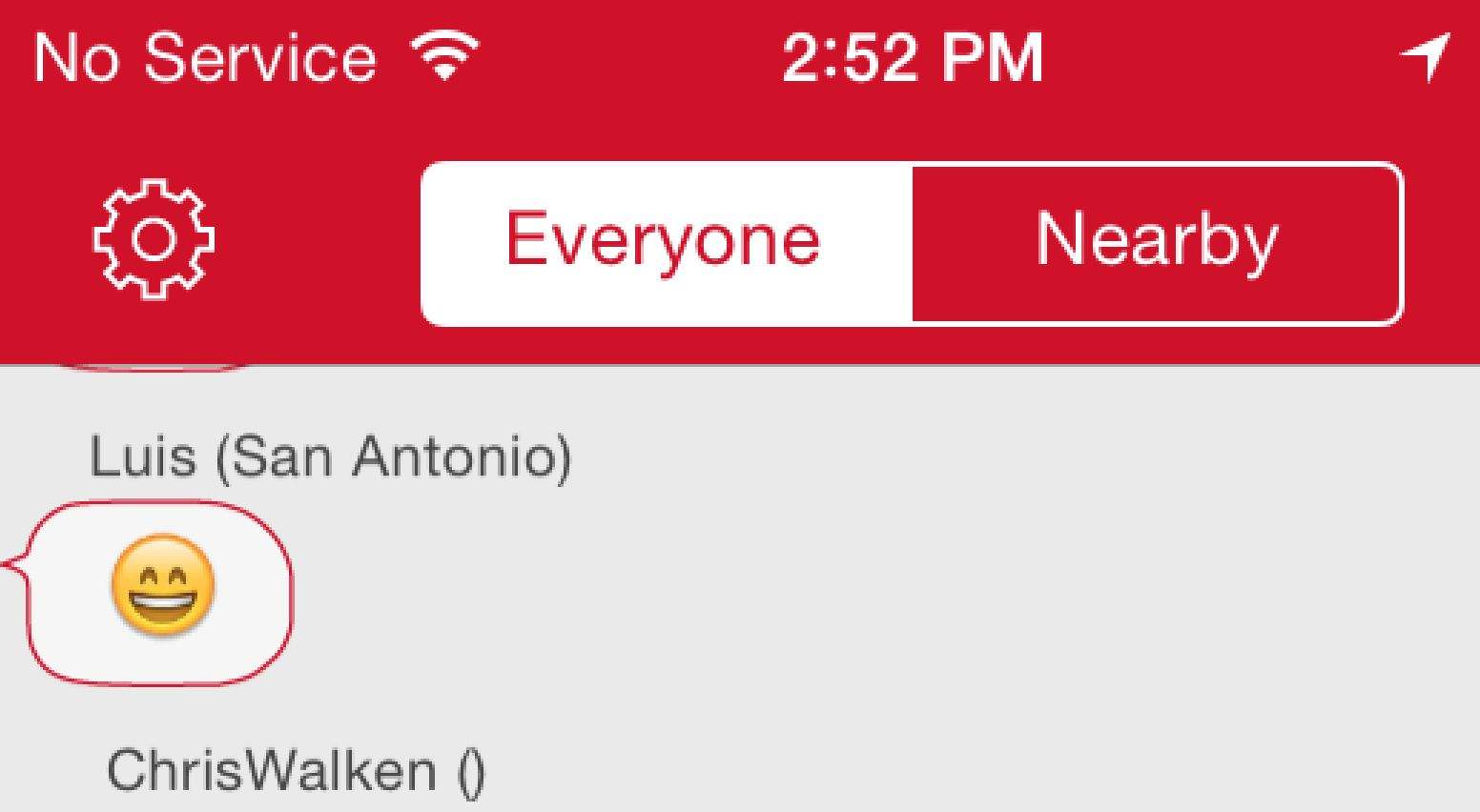A curious download hit Apple’s App Store this week: a messaging app called FireChat.
It’s a new kind of app because it uses an iOS feature unavailable until version 7: the Multipeer Connectivity Framework. The app was developed by the crowdsourced connectivity provider Open Garden and this is their first iOS app.
The Multipeer Connectivity Framework enables users to flexibly use WiFi and Bluetooth peer-to-peer connections to chat and share photos even without an Internet connection. Big deal, right?
But here’s the really big deal — it can enable two users to chat not only without an Internet connection, but also when they are far beyond WiFi and Bluetooth range from each other — connected with a chain of peer-to-peer users between one user and a far-away Internet connection.
It’s called wireless mesh networking. And Apple has mainstreamed it in iOS 7. It’s going to change everything. Here’s why.
It can also extend an Internet connect to a place where none exists — for example, to a hotel basement, cave or to rural areas where cell tower connections are non-existent.
It does that through the mesh networking capability inherent in the Multipeer Connectivity Framework. With multiple users in the area, FireChat can relay messages just like the internet does, from node to node (phone to phone).
(Apple’s AirDrop works in the same way, by the way.)
Here’s an example. There’s an ultramarathon that takes place in California each year on a trail called Skyline-to-the-Sea. It’s a roughly 30 mile trail through giant redwood forests where there is no cell connectivity. Using FireChat or some other app that uses iOS 7’s Multipeer Connectivity Framework, race volunteers, staff and participants could extend Internet connectivity and communication in an ad hoc mesh network that extends the length of the course.
The benefit of such an ad-hoc network is how trivially easy it is to set up. Everybody just use FireChat or AirDrop or any other similar app. Boom! Connectivity for everyone.
You can imagine the uses in a disaster area where cell towers have been knocked out, or other situations where people need to communicate but where no WiFi or mobile broadband is available.
In many poor countries and areas, people might be able to afford cheap or used phones, but not wireless service fees. Wireless mesh networks can provide free Internet connectivity to entire villages, slums or towns.
And, of course, Multipeer Connectivity Framework-based mesh-networking apps like FireChat can become a factor for young people. For example, parents who have given their kids iPod Touch devices can chat with the family using FireChat without connecting to the Internet.
And teens who get in trouble with their parents and have their phone contracts cancelled or suspended can still chat with friends with their iPhones using FireChat (with the neighbor kid’s help).
Because FireChat can be used anonymously, it could be very secure. Not only is it hard or impossible to determine who the anonymous users are, it can’t even be hacked remotely over the Internet if no Internet connectivity is being used. This application and the services in iOS 7 that make it possible seem ideal for communication in repressive, Internet censoring countries.
The big picture here, though, which the public hasn’t understood at all (because apps like FireChat are so new) is that mesh networking is about to go mainstream for consumer use.
Note that Open Garden, the creator of FireChat, already offers wireless mesh networking on Android, but not in the form of a chat app — it’s just the networking.
Apple is a leader here with its Multipeer Connectivity Framework. But it appears that Google is also going big with consumer-level mesh networking also.
Google’s senior VP Sundar Pichai was interviewed at SXSW recently, and mentioned mesh networking twice in the context of wearable devices (such as those that support Google’s more recently announced Android Wear initiative, and also in the context of home automation.
With Apple and Google building in the foundations for app developers to easily create ad-hoc wireless mesh networks wherever they go, it’s only a matter of time before the wonders and power of mesh networking hits the public in a big way.
Think of wireless mesh networking as giving app developers the ability to create tiny, private or public Internets that are limited in time and place. It will have a somewhat similar impact as the Internet itself in how it undermines authority control over communication.
Ubiquitous wireless mesh networking could erase many of the places and situations where connectivity isn’t possible, or connectivity over the Internet isn’t desirable.
Kudos to Apple for building this into iOS 7. It’s the first major mainstream implementation of wireless mesh networking that I’m aware of.
Thanks to Apple’s Multipeer Connectivity Framework, wireless mesh networking is here. It’s peer-to-peer. Get excited about it.


